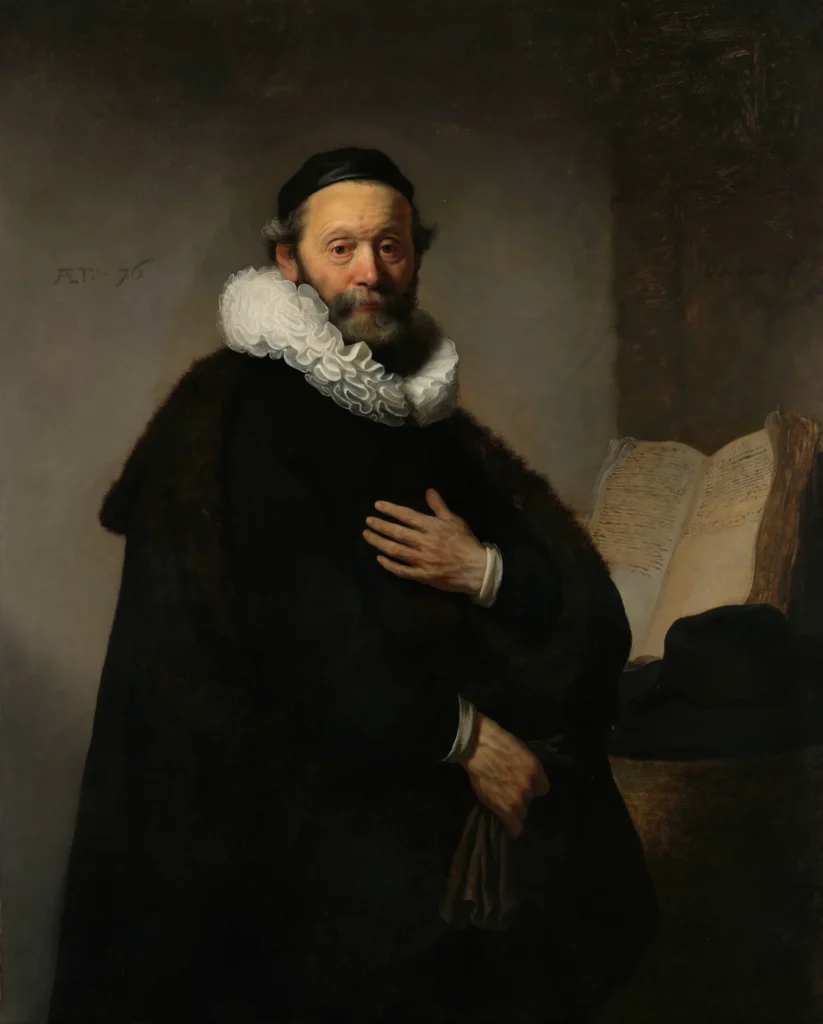Portrait of Johannes Wtenbogaert
Created by the renowned Dutch artist Rembrandt van Rijn in 1633, the Portrait of Johannes Wtenbogaert is a remarkable oil on canvas work measuring 130 cm x 103 cm. It captures the essence of Johannes Wtenbogaert, a Remonstrant preacher, showcasing Rembrandt's sophisticated use of light and brushwork. At 76 years old, Wtenbogaert appears with wisdom and dignity, exemplifying Rembrandt's empathetic portrayal of his subjects and the rich Baroque tradition.
Year 1633
About the Artwork
The Portrait of Johannes Wtenbogaert is not just an ordinary portrait; it reflects the complex interplay of art, religion, and society during the 17th century in the Netherlands. Johannes Wtenbogaert was a significant figure in the Remonstrant movement, known for his theological writings and his advocacy for religious tolerance. Through this painting, Rembrandt encapsulates not only Wtenbogaert's physical presence but also his intellectual gravity. The use of strong light and shadow in the work serves both to highlight Wtenbogaert's features and to symbolize the enlightenment he sought in his theological pursuits. This portrait stands as a testament to Rembrandt's deep understanding of human character and the times in which he lived, reinforcing his stature as one of the great artists of the Baroque era.
Did You Know
Johannes Wtenbogaert was a leading figure in the Remonstrant movement, which sought to promote religious tolerance during a time of significant conflict between Protestant factions in the Netherlands.
Rembrandt’s use of chiaroscuro, the contrast of light and shadow, is vital in this portrait, helping to create a three-dimensional effect and to convey the emotional depth of his subject.
The portrait remains a key example of Baroque portraiture and is celebrated for its ability to communicate the personality and dignity of its subject, encapsulating Rembrandt’s unparalleled contributions to the genre.










